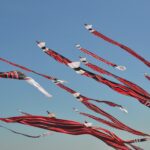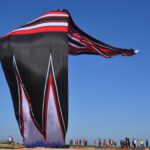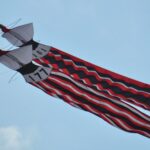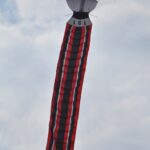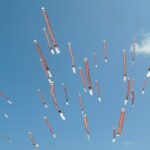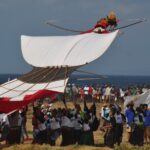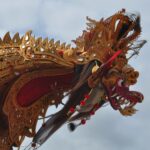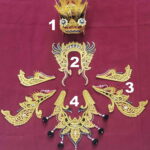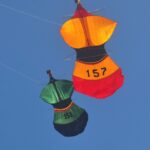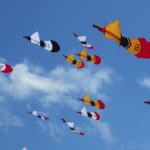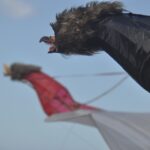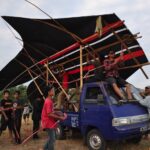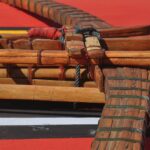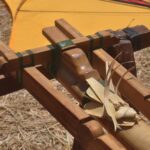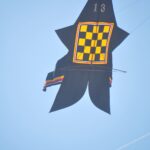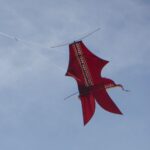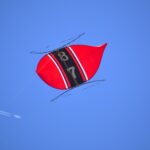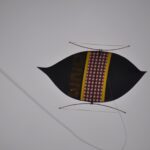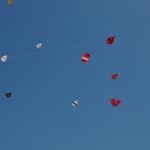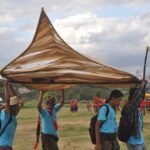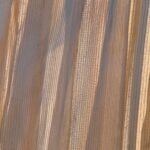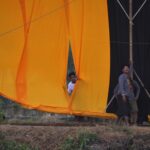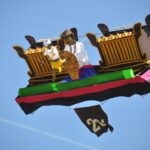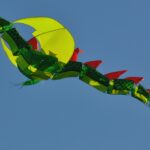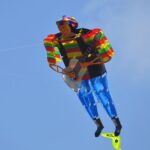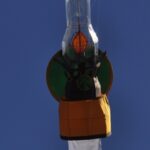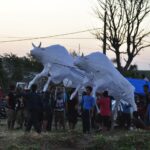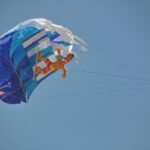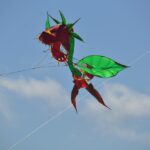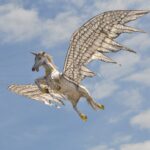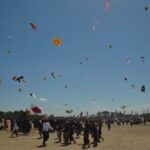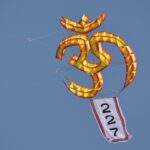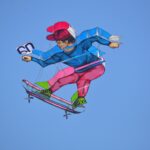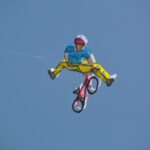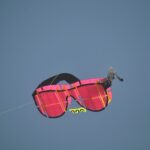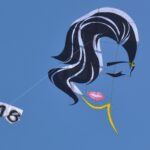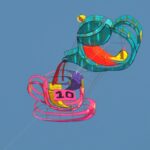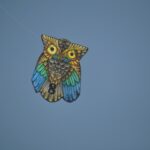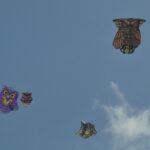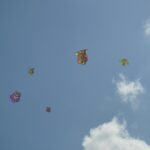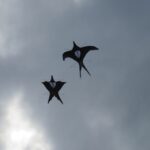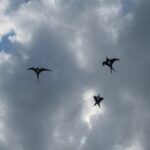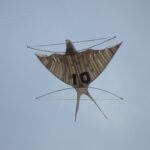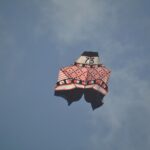Some of the Traditional Balinese Kites.

| Balinese kites are large and the kite fliers are young. | |||
| Strong kite culture. There are many countries in the world that have beautiful and unique traditional kites, but there is no place in the world that has such a strong kite culture as Bali in Indonesia. In Bali the Hindu religion is the backbone of the society, and kite flying is both a pastime and a religious act. There is in fact a kite god, Rare Angon, who is often depicted as a boy playing flute while riding a buffalo. The Balinese word for 'kite' is layangan, which is a diminutive for the sanscrit word layang, meaning 'letter'. A small letter is a message, so flying kites is sending messages to the gods. Spirit. In the the same way as every person has a spirit, every Balinese kite has a spirit which comes from the maker: when a kite maker is making a kite he shares his spirit with the kite. Often before flying the kite the fliers give a small prayer and an offering to the spirit of the kite for a good flight. For the Janggan the maker’s spirit is not strong enough; it needs a stronger spirit. Therefore a special purification ceremony, Sekaa Gong, is performed for a newly made Janggan. It is performed by a priest, often at a temple. This makes the Janggan the most sacred of the Balinese kites, and its body and head must never touch the ground. If this should happen, the Janggan loses the spirit and a new ceremony to re-install the spirit must be performed before it can fly again. Colours. The three main traditional Balinese kites have a quite simple colour scheme, using only three colours: black, red and white. These colours are called ‘tridatu’ and this colour combination is seen everywhere in Bali. From www.nowbali.co.id: “The simple yet significant philosophy behind this unity of colours has become akin to the Balinese identity. White awakens goodness in spirit; red evokes creativity and bravery; whilst black is synonymous to power or protection from bad spirits. Tridatu, if one were to translate it, means three powers. Almost comparable to the holy trinity, Tridatu embodies the Balinese-Hindu’s three manifestations of God otherwise known as the Trimurti. Brahma The Creator is represented in red; Siwa The Destroyer in white, and Wisnu The Preserver in black. Trimurti permeates through the core aspects of the Balinese-Hindu’s circle of life (birth, life, and death); captured by the three entities who hold the power or ‘duty’ of creation, welfare, and destruction for each stage of the life cycle. | Then, there’s the Tridatu yarn bracelet. Worn by the Balinese-Hindu strictly around the right wrist, gelang Tridatu may appear as a simple yarn-threaded bangle. But it’s a symbol of godly power and ‘magic’.” Large kites. The Balinese kites are unique in shape and often very big; 4 - 7 m wing span is quite common. Usually it takes several people to launch and fly a kite. Practically every Balinese boy knows how to make and fly a kite. From May to October there are good and stable winds blowing in Bali; often quite strong. This is kite flying season, and there are kites in the sky anytime of the day and everywhere; even when landing at the airport one can see kites through the airplane window. Kite competitions. The kite competition season then starts in June or even in late May, when new kites have been built and test flown. In a kite competition in Bali there are usually five categories of kites:
Sometimes a few more categories are added, at least at some competitions:
|
||
| Click on the thumbnail pictures below to get the large pictures. | |||
| Janggan | |||
| The Janggan (dragon kite) is the most spectacular of the Balinese kites with its extremely long tail and beautifully carved head. According to Hindu mythology the planet earth rests on the back of a giant turtle named Benawang Nala. The dragon Naga Basuki has wound itself around the earth. Thus Benawang Nala and Naga Basuki are the protectors of the stability of the earth. This symbolizes a state of balance that creates peace. Therefore the Janggan is the most sacred of the Balinese kites. Before it is flewn for the first time there is a special ceremony to instill a holy spirit in the kite. Because of this sacredness the Janggan must never touch the ground. Thus its is very important for the kite fliers to catch the kite in the air when they bring it down after flight. The head of a Janggan is called tapel and is exquisiteley carved out of a light weight wood called pule. | The head is beautifully painted and heavily decorated and it is probably the best kite souvenir one can bring from Bali. The decoration is called payasan. For the different parts of the payasan, see picture below. The head must be protected at all times; at the kite field it often rests in the shadows of umbrellas. The long tail is probably what makes the Janggan most remarkable: the tail has a length that is 20 to 22 times the wing span. A Janggan of normal size has a wing span of 4 - 6 m; thus a 6 m Janggan has a tail of at least 120 m length; that makes 720 square meters of material. Currently the largest Janggan is Nagaraja (King of Dragon) with a wingspan of 11.5 m and a tail of 234 m. The proportions of the graphics of the tail follow certain rules, see picture below. The tail should be made in such a way that there is a smooth wave rolling from the start of the tail all the way down to the end. |
||
| Janggan sky at competition. |
Sweeping (and dangerous) tail at Janggan launch. | The quality of waves rolling down the tail are important. | The rolling waves down the tail. |
| Janggan sky from front. | Plastic Janggans. |
Protected landing of Janggan. | The sacred head protected with parasols. |
| Exquisitely carved and decorated Janggan head. | Payasan - the decoration on the Janggan head. | The parts of a Janggan tail. | Janggan Merak. |
| Kuwir | |||
| Kuwir, also called Janggan Buntut, is a kite that has won popularity over the last ten years. Ten years ago there was maybe one heat of Kuwirs in a kite competition with maybe 4 - 5 kites partcipating, but nowadays there are many heats with many kites at every kite competition. As the name Janggan Buntut implies it is closely related to the Janggan. Buntut means Tail, and this kite has considerably shorter tail than a Janggan. | While a Janggan always have a white body with a black waist the Kuwir is made in many different colours. This often makes a Kuwir sky quite colourful. The head is also different: it can take other shapes than a dragon and is much less elaborated. This, plus the lack of a long material demanding tail, makes a Kuwir much more affordable, and that has certainly contributed to the increased popularity. |
||
| A variety of colours. | |||
| Kuwir head. | Early generation of Jangan Buntut. | ||
| Bebean | |||
| Bebean is the most popular kite. Bebean means ‘fish’, so it should swim in the sky like a fish in a gentle horizontal figure-of-eight movement. Fish is a symbol for the prosperity that is abundant in Bali - at the sea, in the rivers, in the lakes and even in the rice fields. Fish is important for the daily life; for ceremonies and meals. The normal size has a 3 - 6 m. wingspan. The larger size is called Bebean Big Size and has over 6 m. wingspan. | The regular Balinese Bebean is generally black, red or yellow with stripes using the same set of colours in the middle, normally vertically symmetric along the spine, from front till the tail starts. The leading edges are curved from the front to the wing tips. In Sanur village they have a slightly different style: the graphics is in form of a square in the waist of the kite, usualy divided into smaller squares and only one contrasting colour. The leading edges are slanted straight until they meet the curved cross bow. |
||
|
Regular Bali style Bebean with graphic in stripes and curved front edges. | Bebean sky at competition. | Landing a Bebean Big Size. | Loading Bebean on truck for bringing home after competition. |
| Bamboo structure on large Bebean. The cross bow with multiple layers of bamboo, like a leaf spring. |
The front of the spine of a large Bebean with small blessing basket. The rest of the parts (like the cross bow) are yet to be attached. |
Sanur style Bebean with graphics in a square in the centre of the body and straight leading edges until the cross bow. | Old style Bebean: more slim. |
| Pecukan | |||
| Pecukan [petchukan], the leaf kite (or corner kite), is the most difficult kite to fly since it only a wing. The Pecukan is curved back and has sharp corners or points in both ends. That symbolizes positive and negative, good and bad, day and night. They are on the opposite ends of the same kite and look the same. They must always stay together and make unity. Traditionally the sail was made of skin from the banana plant, and it is still made like this in the town of Tabanan. This Pecukan is called Kerokan gedobong. | The sail on the Pecukan is not made in one piece: It is split up in longitudinal overlapping parts, where the outer parts, seen from the spine are overlapping the inner parts. This is to allow more flexibility of the frame. The Pecukan should also have a small figure-of-eight movement in the sky, although not as much as the Bebean. |
||
| Kerokan Gedobong - the skin is made of the dried skin of banana plant. | The "negative" venting in a Pecukan sail. | Close up of the dried banana plant skin. | Giant Pecukan. |
| Kreasi Baru | |||
| The Kreasi Baru (New Creation) category shows the diversity, skill, imagination and humour of the Balinese kite makers. Baru means New, and this implies that the kite must be made for the current competition season. When the Balinese kite makers picture something they want to see in the sky they "simply" make a kite of it, regardless of the shape. | This is quite different from Western kite makers: When they picture an idea, they put the picture as an applique or a painting on a Rokkaku or some other well known flat surface kite. | ||
| Gamelan instrument. | Kite surfer. | Dragon. |
Bob Marley -No woman no kite- |
| Paraffin lamp. | Pre-flight of water buffaloes. |
Telling a story (part 1). Maybe the inspiration... | Telling a story (part 2). |
| Surfing a Tunnel. |
Chomper from Plants vs. Zombie game. Chomper |
Alicorn (Cerapter/winged unicorn) | A sky full of new creative kites. |
| Kreasi Baru - Bali Sandwich Box | |||
| In 2014 an entirely new kite construction type appeared on the Bali sky. The construction consist simply of two identical shapes joined with some distance between them, like a sandwich. In this way it becomes in a way a box kite, hence the model name Bali Sandwich Box. | This model started to become popular in 2016, and in 2019 it was extremely popular; so popular that as much as more than 90 % of all Kreasi Baru entries were built like this with constantly increasing fantasy. Note that practically all these kites are asymmetric! |
||
|
The Sanskrit OM. | Skateboarder. Notice how the wheels consist of propellers. | BMX rider. | A pair of glasses that make you see the whole world in pink. |
|
A walk in the sky: Johnny Walker | Mask of Tut Anch Amon. | Balinese Girl. | Pouring a cup of tea. |
| Celupuk | |||
| The Celupuk started to appear on kite competitions in the Kreasi Baru category in the middle of the 2010's and it has grown in popularity so much that it has formed a category of its own in most kite competitions. | The Celupuk is made in a different way compared to other Balinese kites in that it is painted, using air brush technique. Balienese people are very artistic, and many have learned to master the air brush technique. | ||
| Kedis Kandik | |||
| Kedis Kandik is the Balinese swallow kite. It is often seen in the daily sky, but not so often in competitions. | The stucture is more simple, and thus more easy to build. Often black plastic is used as skin. | ||
| Kedis Kandik in banana plant skin. | |||
| Cotek | |||
| Cotek is a smaller kite that somehows looks like a mutilated Bebean. The top part has the same structure as a Bebean but the bottom part only partially has a frame, so most of the rear skin forms a twin tail. The graphics does not need to follow any special rule but is more free. | Due to the tails the Cotek then doesn't have the same swimming movement as a Bebean but is more steady in the sky. | ||

